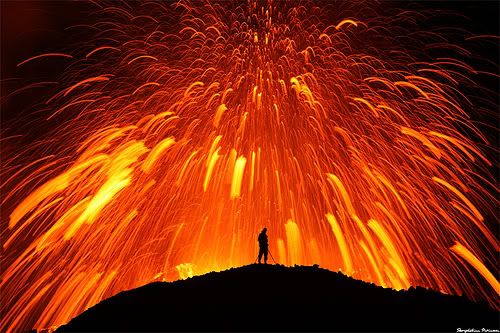
I want you to imagine for a moment that you are a wildlife photographer observing a waterhole in the Serengeti. The waterhole is positioned roughly 50 feet from the open plains. Much of the pool is surrounded by a thick belt of vegetation, with the exception of a 15 foot stretch of soft muddy shoreline. Given that this is the only water source in several miles, you tentatively assume that it would be a good place to capture photos of the various creatures native to the area.
As your luck would have it, after only a few minutes of waiting, a zebra approaches and, being wary of predators, approaches the hole for a drink. The zebra drinks its fill, and almost as quickly as he came, is gone. A moment later, another zebra approaches from the same direction, spends a short time drinking (from a spot 5 feet adjacent from the first zebra), and also departs the way he came (after all, it's easier to walk across the sandy beach than transverse through the thickets).
Then finally, just before you call the day to a successful close, a final zebra arrives for the much needed water, drinks what it needs, and walks away.
Looking at the tracks left behind by the animals, you begin to wonder: what would somebody who had only seen the traces they left while walking to and from the pool have thought? After all, these were animals that were roughly the same size, walking at roughly the same speed, spaced roughly equally from each other (4-5 feet between trackways), and all with similar goals/geographic restrictions. You know that they were three lone ungulates. You saw them yourself! But somebody, were they to visit this hole themselves would not have this information. It would be a reasonable conclusion that they walked in together.
Now, in this same thought experiment, transport yourself several millions of years into the future. The plains have long since gone, and the pool long dried. An observer (human or otherwise), while hiking through the now uplifted sediments derived from this pool sees these tracks. Unlike the previous viewer from the past, this person doesn't have access to the past geographic constraints. He doesn't know of the thick vegetation that proved to be such a limitation to the zebras. All he sees are three sets of tracks, each equally spaced, and formed by the same variety of foot, all walking in the same direction, turning in the same direction, and leaving.
He has several conclusions that he can make: either a. the track makers were walking in formation of a group of three, or b. there was a single track maker followed by two track makers (or vice versa). or c. there were three individual track makers, each of which either independently arrived at the waterhole at the same time and left at different times or arrived at different times and left at roughly the same time.
The point is: how can he possibly decide between these? Each scenario, though very different in life, would leave an identical trace. He may decide that they traveled as a group, or he may decide that they were individual creatures on their own schedules. The most he can accurately say is that it is possible that the track makers traveled as a group.
Of course, many more track makers over a much larger distance traveling for a much longer length of time would make the possibility of a group derived trackway more likely. But, like Schrödinger's cat, we won't be able to know without the possibility of doubt until we observe
the event. Problem is, we don't have that option.


